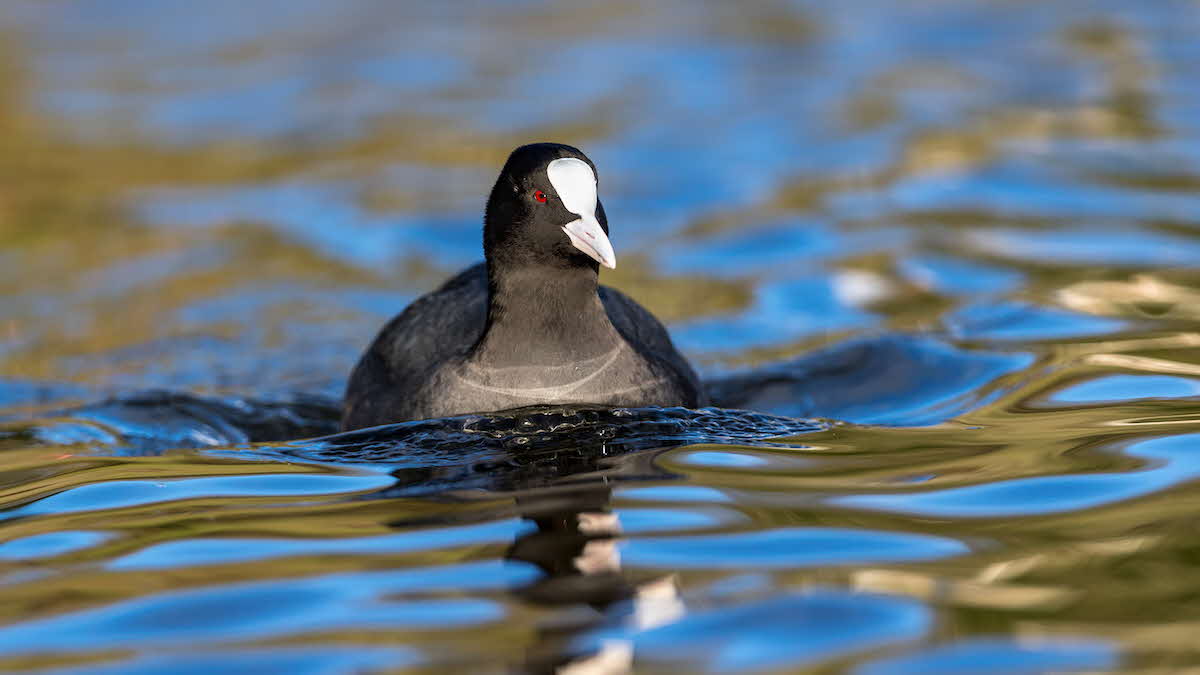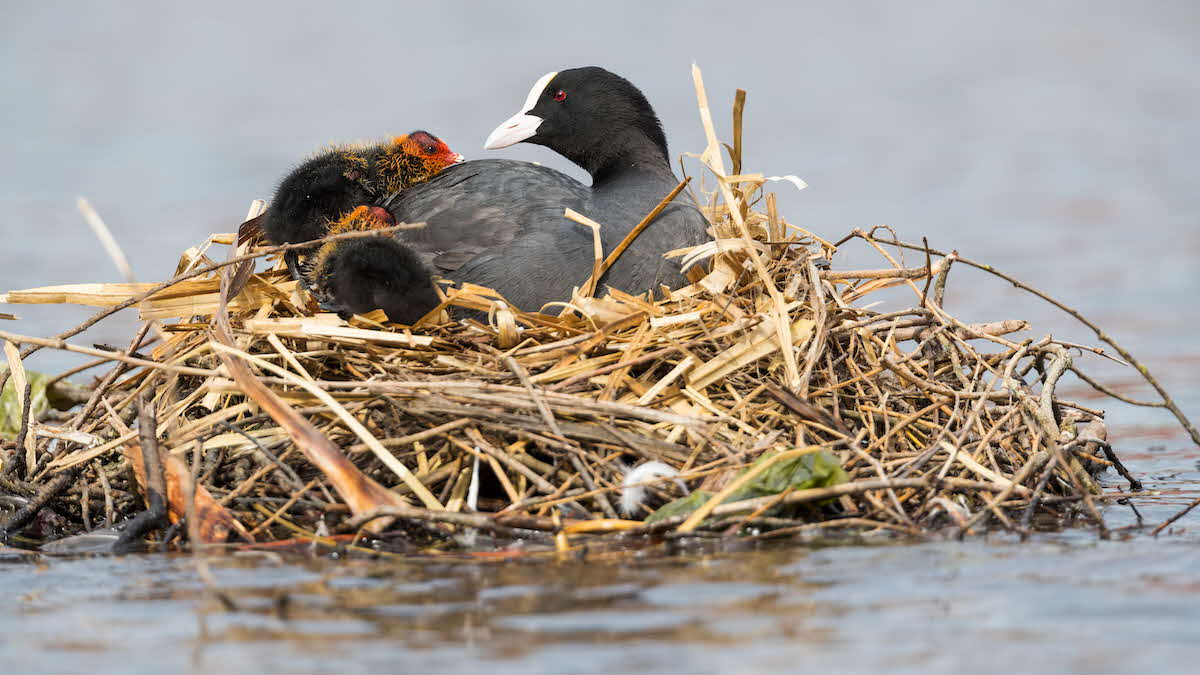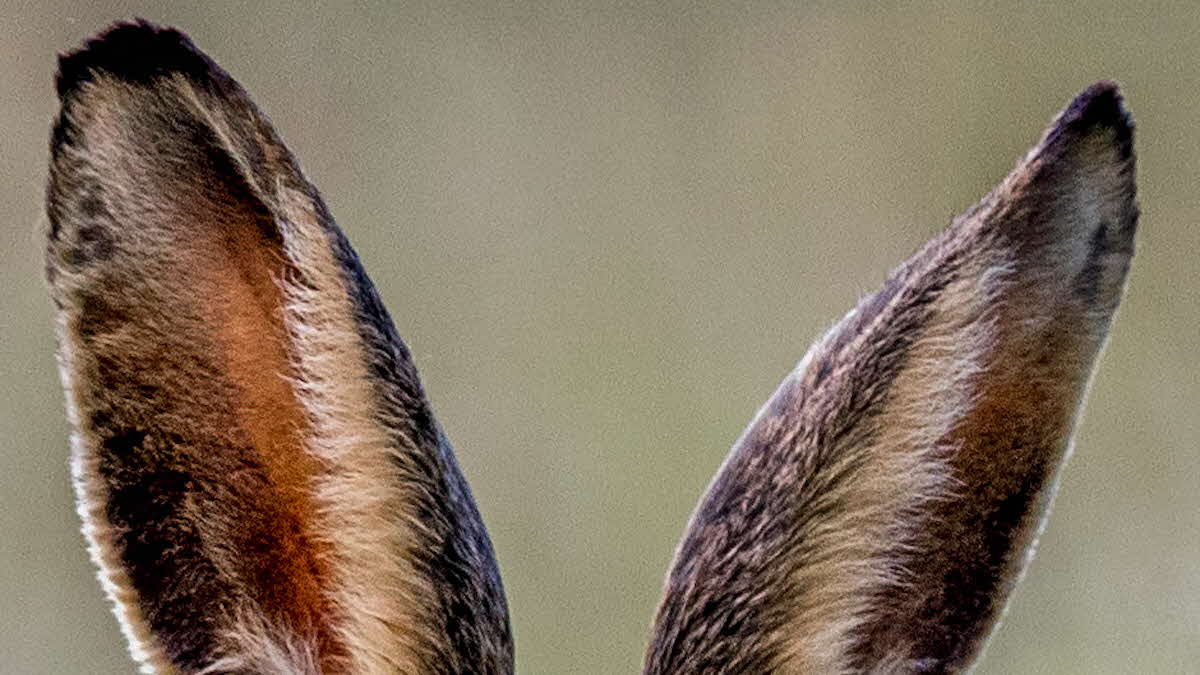Top nature campsites
You’ll be amazed at the variety of animals to spot on some of our Club campsites
View our top nature campsitesSpring is the perfect time to observe the quirky behaviour of a distinctive bird on our lakes and waterways. David Chapman provides the lowdown
 The distinctive white shield on a coot’s forehead
The distinctive white shield on a coot’s forehead
Black and white they may be, but coots are definitely not lacking in colour. These fascinating birds are easy to watch, and in spring they are at their explosive best.
Just find a lake, pond, reservoir or any other stretch of fresh water with sufficient vegetation, and the likelihood is that coots will be in residence. These are dark, dumpy waterbirds with just the one contrast: a white bill, above which is a white frontal plate or ‘shield’. The only other similar bird is the moorhen, though its bill is red and it has white flashes in its perky tail.
It’s the coot’s white shield that gave rise to the saying ‘as bald as a coot’. While most birds are feathered above the bill, the coot is most definitely smooth. But why? The answer lies in evolution and natural selection. Watch them in spring and you will see that they often face up to each other head-to-head, a bit like a pair of red deer stags walking in parallel to assess each other. While deer judge one another by weight and size of antler, coots compare the size of their white shields.
If one coot can see that its competitor is dominant, it might back down with no harm done, but if both refuse to concede they will attack each other. Such fights are usually short-lived but they can go on for minutes at a time, the birds slapping one another with their feet and pecking with their bills. These are disputes over territory and usually involve just male birds, though other coots may join a particularly protracted battle.
To chase off competitors, coots will charge at them across the surface of the water. They do this by using their wings to stay partially airborne, but they also have important adaptations to their feet. Unlike the webbed feet of ducks, which are designed primarily for swimming, coots’ feet are lobed, an almost halfway point towards being webbed. This design is good for swimming and running on the water’s surface, but it’s also not bad for walking; coots are faster than other ducks when on dry land.
It is not just other coots that are seen off. During the nesting season the males will chase anything that might pose a threat. I have seen mute swans and Canada geese scared out of their wits in the face of an oncoming coot.
It is difficult to distinguish between male and female coots. In spring the males have slightly larger shields, but this is not always easy to spot, so it is usually best to identify males by their feisty behaviour.
 Adult coot with chicks on the nest
Adult coot with chicks on the nest
Coot nests are made from bits of vegetation collected over weeks on end. Typically they build in the reeds, rushes or overhanging trees at the edges of lakes, but I have seen them nest on boats, and in my local park a pair of coots even took up residence on a fountain that was inactive over winter. Much to the frustration of the park staff, the water couldn’t be turned on again until they had finished the breeding season!
The appearance of baby coots is quite startling: with a red face and bright orange plumage around their necks, they almost look like they are on fire. These bright colours stimulate their parents to provide food, which consists of seeds, vegetation and invertebrates. They youngsters have loud, high-pitched calls. As they grow, they are less dependent on their parents and lose their bright colours, becoming quite drab.
By this stage their parents will be settling down for a second brood. Over the course of a year, coot parents may well raise between 12 and 20 young; most will fall prey to predators – including grey herons, pike, gulls and otters – but enough make it through to adulthood to keep the population going. In fact, the British Trust for Ornithology estimates the population of coots in the UK at 26,000 pairs, which is an increase of 100% over the last 50 years. Their success is in no small part due to their ability to live alongside people, often taking food from us, tolerating our intrusions and nesting on our fountains!

Every month I will show you a photo of something from the natural world. It might be a close-up, or a subject that is difficult to identify. All you have to do is figure out what it is! Here is this month’s photo; no clues or prizes – it’s just for fun. (I will give you the answer next month, but if you can’t wait, see the Digital Magazine.)
The subject of February’s mystery photo was: a tawny owl